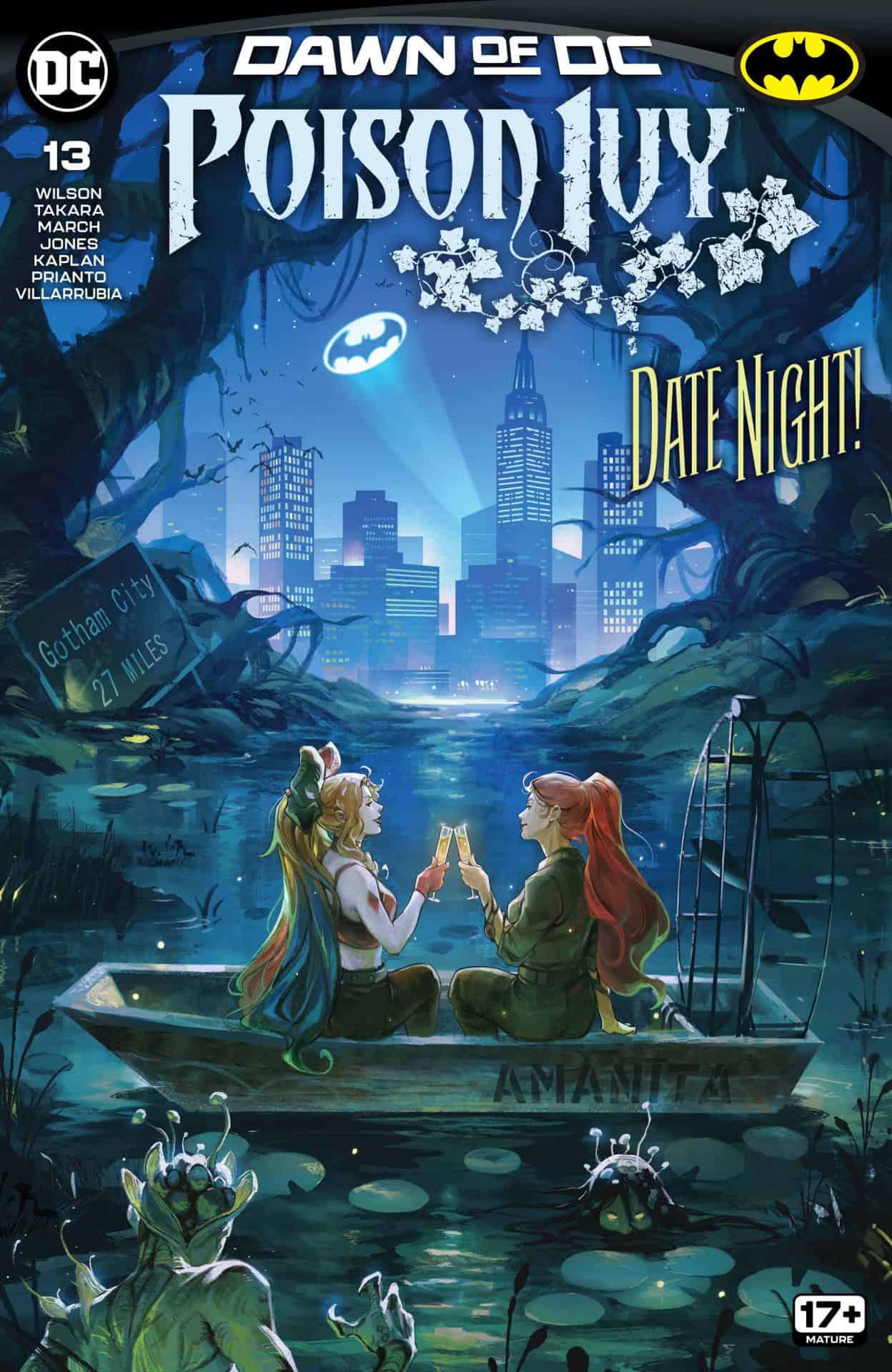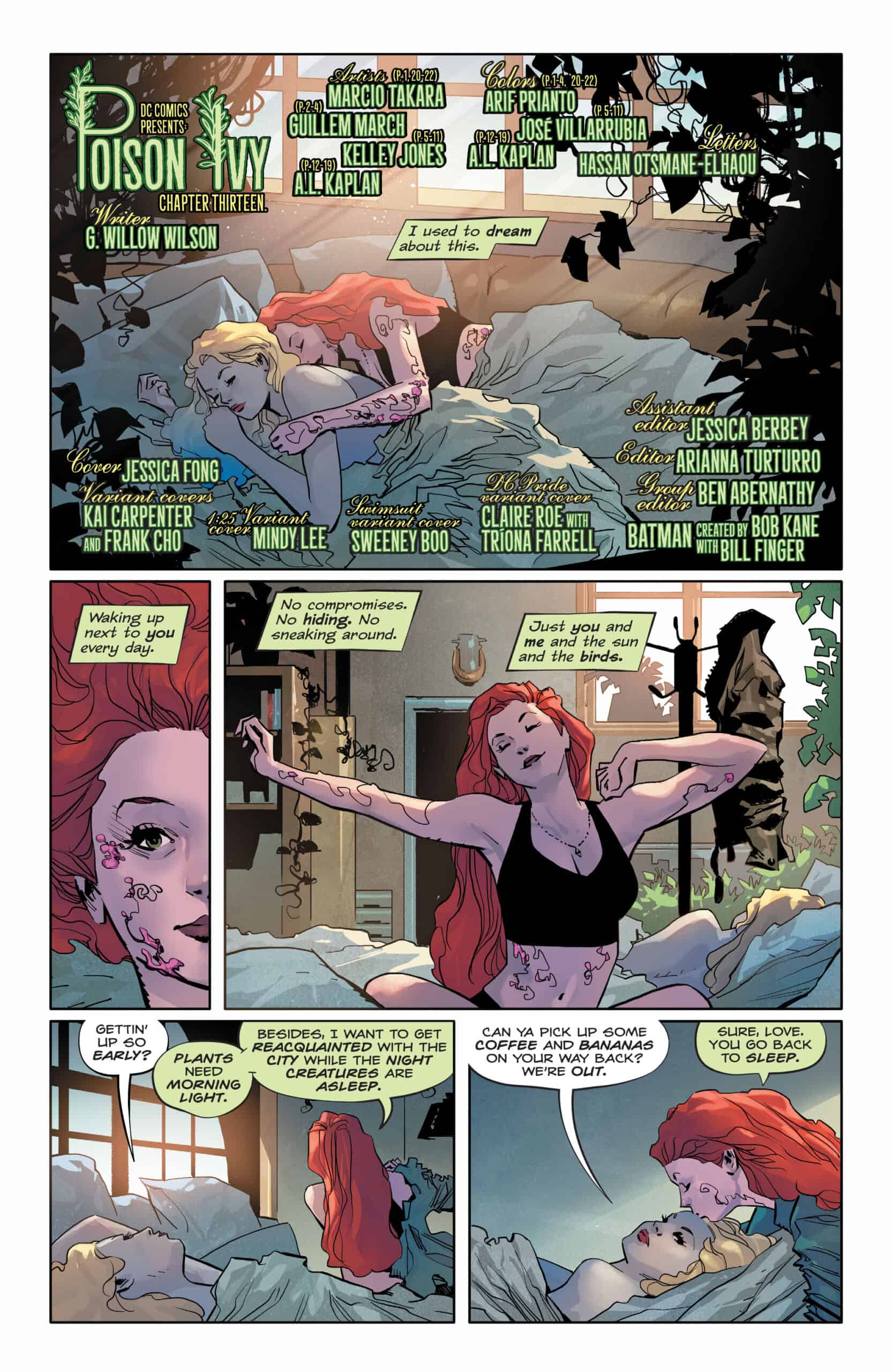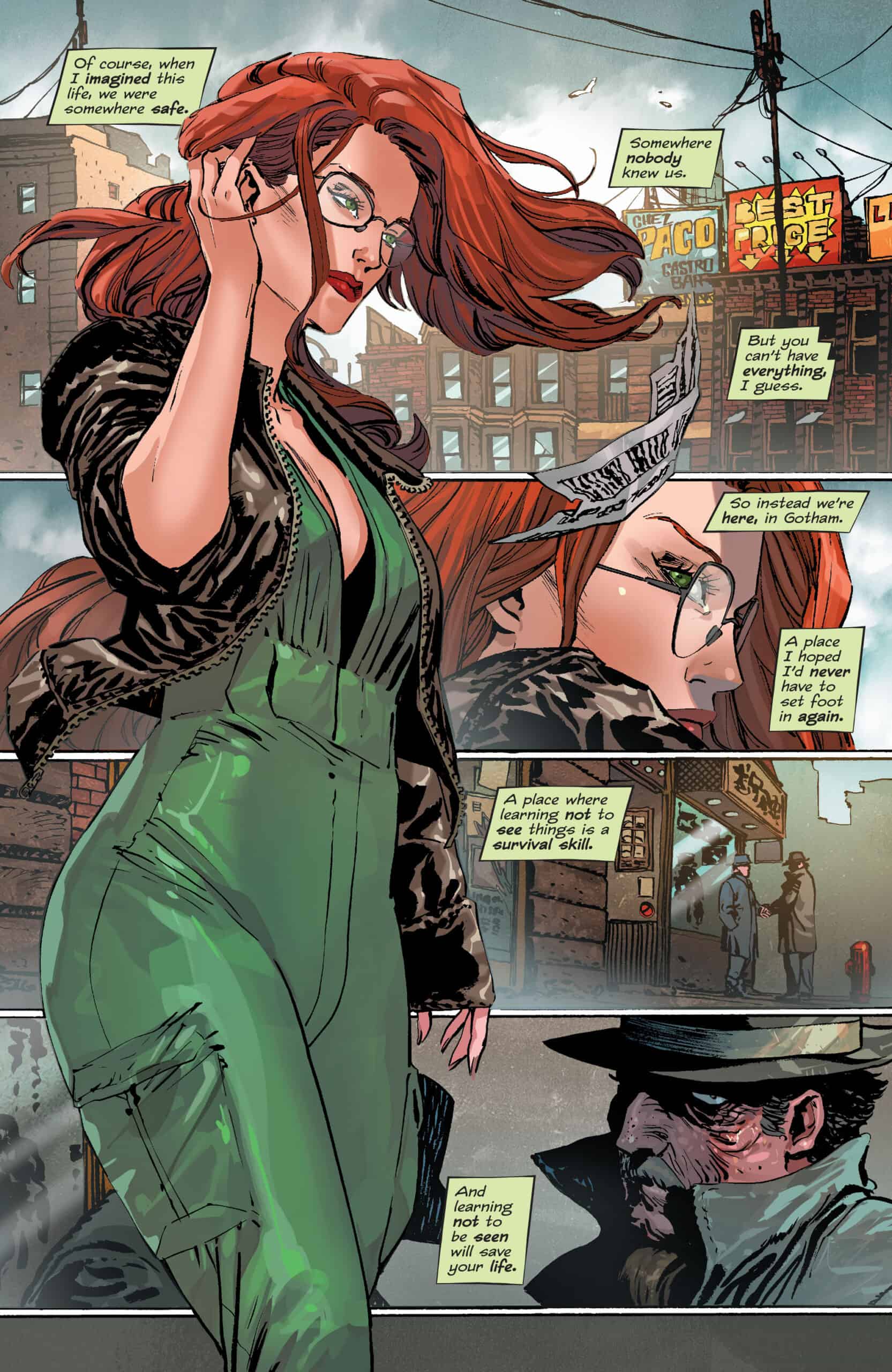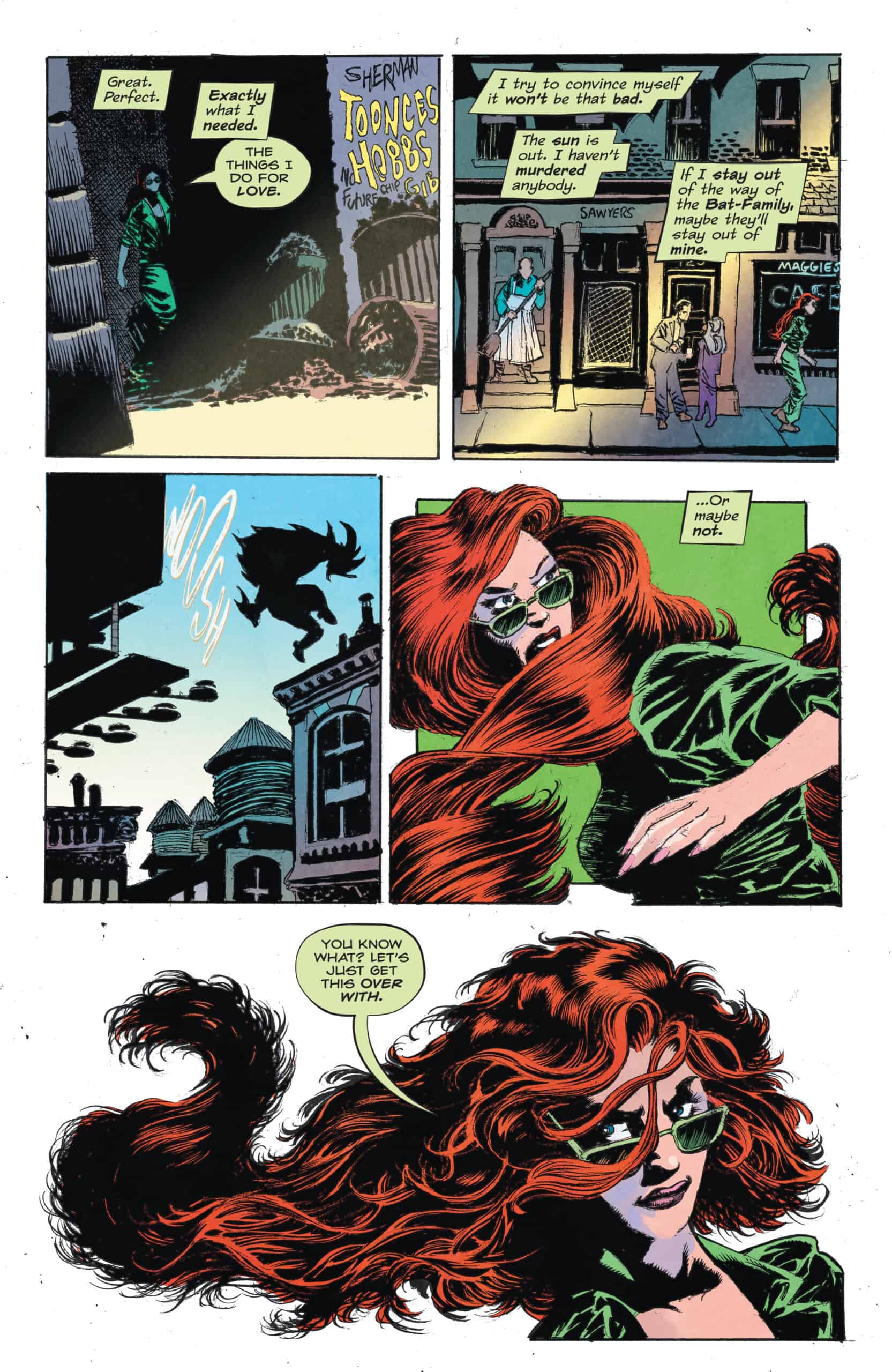Poison Ivy #13

Recap
After saving a wellness retreat and its well-meaning attendees from a wild strain of lamia, Ivy has finally returned to Gotham and - more importantly - Harley Quinn.
Review
At the end of Poison Ivy #12, Ivy finally made her long-awaited return to her home turf of Gotham and her girlfriend, Harley Quinn. Everything from Jessica Fong’s offbeat romantic cover featuring “Harlivy” to cover text hyping “Date Night!” and the ad copy describing a “romantic night with your sweetie in the swamp” prepares readers for a story that doesn’t happen. In reality, Harley appears only on page one. Since Poison Ivy began tragically last Pride Month with Harley and Ivy’s breakup, seeing them together for more than a page this year would have been incredibly meaningful. Instead, the narrative focuses on Ivy returning to her roots (ba-dum-tss) and refamiliarizing herself with the city she left behind. Writer G. Willow Wilson does a great job building suspense and setting up an intriguing mystery for the comic’s next arc, which ties into a more significant Knight Terrors event. However, the comic’s cover, marketing, and Pride Month timing make Poison Ivy #13 feel like a deceptive bait-and-switch or, at best, one of DC’s most famous queer couples and Pride Month being sidelined by Knight Terrors. Whatever the cause, this sort of unfulfilled promise is all too familiar for queer audiences.

While Poison Ivy #13 isn’t longer than a standard (22-page) issue, it has a mind-boggling grand total of four artists and two colorists. Series regular Marcio Takara is joined by three guest artists: former Gotham City Sirens artist Guillem March, horror comics heavyweight Kelley Jones, and queer comics creator A.L. Kaplan. The comic’s art direction feels similarly conflicted. As Ivy traverses Gotham, a new artist takes over with every significant shift in the scene. This approach might work in an anthology format or in a comic with several narrators or flashbacks. Still, this particular comic makes it harder to stay immersed in the story being told.

All four artists have very distinctive styles and approaches to drawing Ivy, so much so that her proportions and costume change dramatically between artists. March makes Ivy’s green jumpsuit much more fitted than Takara usually draws it. Then, in Jones’ work, her coveralls and cropped jacket merge into a green crop top before Kaplan reverts it to a much boxier garment. As with previous Poison Ivy issues, Ivy moves between being an attractive human protagonist and a terrifying, awe-inspiring presence. Troublingly, this issue also tosses the “object of the male gaze” into the mix, depicting her in blatantly objectifying ways that distort her anatomy. In one panel, she also has lazy eyes.

There are noticeable changes in everything from how they render backgrounds to how realistic their color choices are. The jumps between colorists are equally jarring. (Arif Prianto colors Takara and March, José Villarubia colors Jones, and A. L. Kaplan colors his work.) While the issue’s artists and colorists manage to create a consistently haunting mood, their varied styles and quality of work results in something that feels incoherent, doing a disservice to not just the story but the artists themselves.
Final Thoughts
Poison Ivy #13 is an intriguing premise undermined by perplexing art direction and deceptive marketing. It’s a worthwhile read for monthly readers, but anyone expecting a Harley & Ivy rom-com for Pride Month will be disappointed.
Poison Ivy #13: Date Night? Nope!
- Writing - 9/109/10
- Storyline - 7.5/107.5/10
- Art - 6/106/10
- Color - 7/107/10
- Cover Art - 7/107/10





